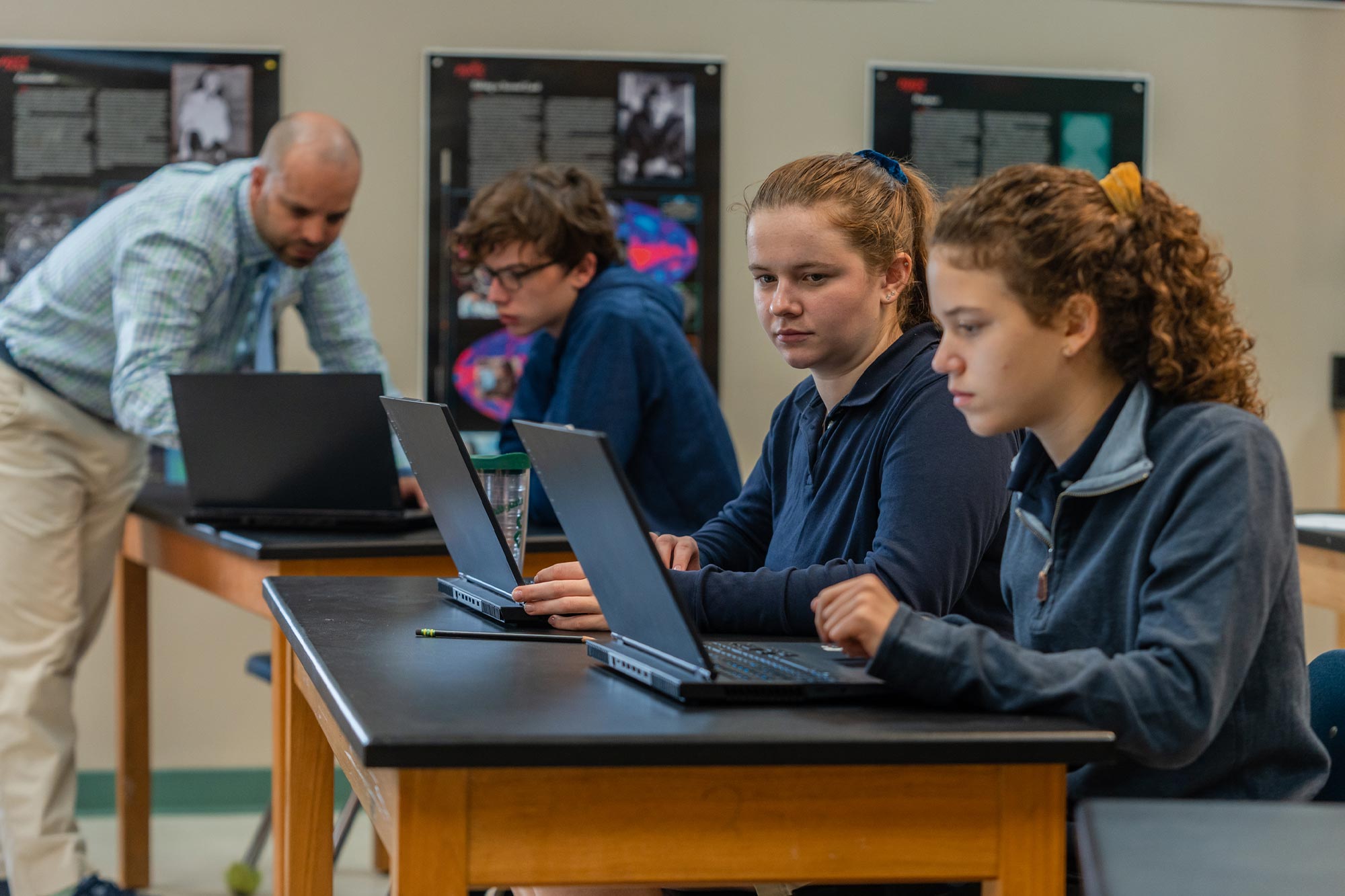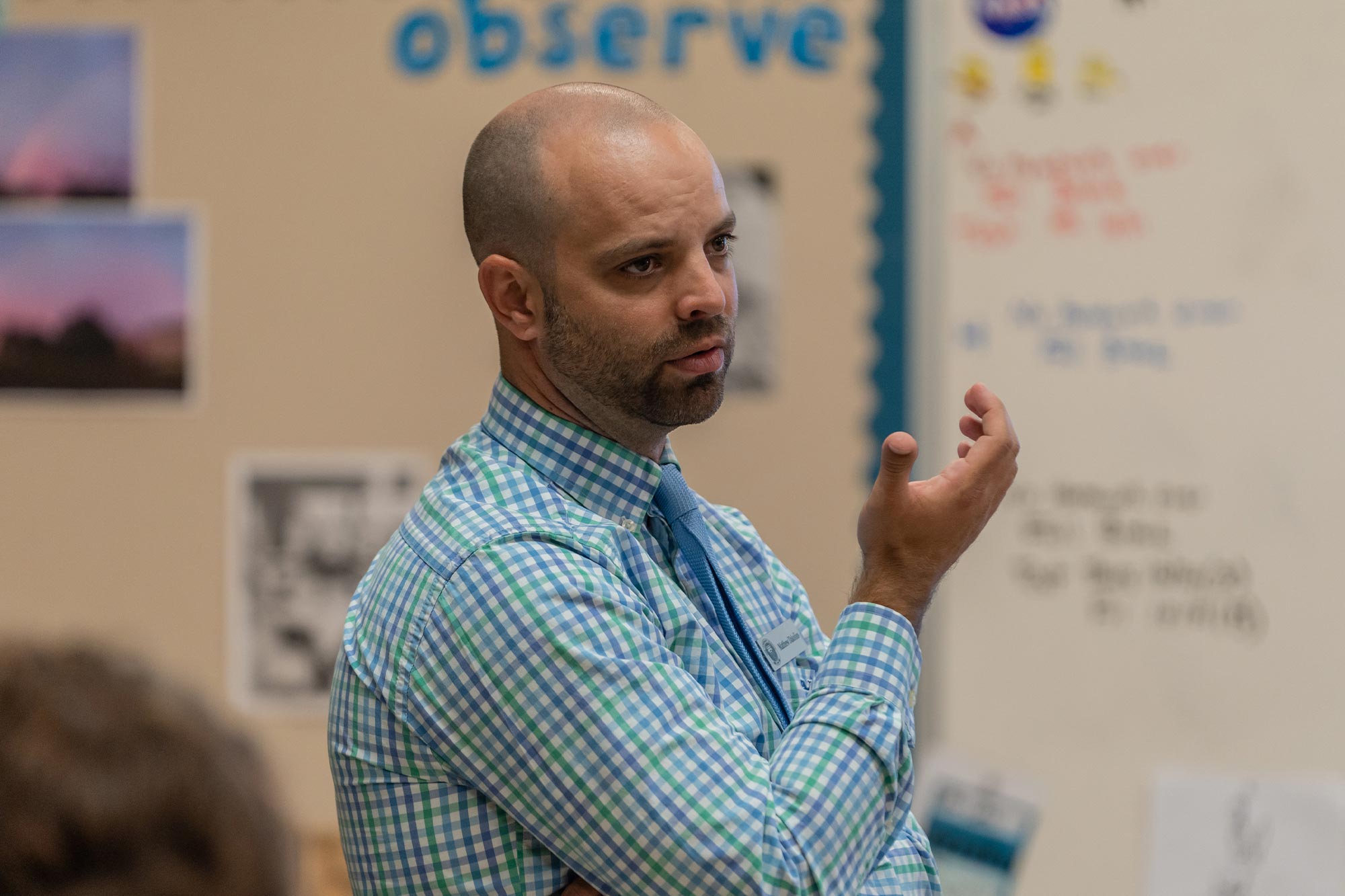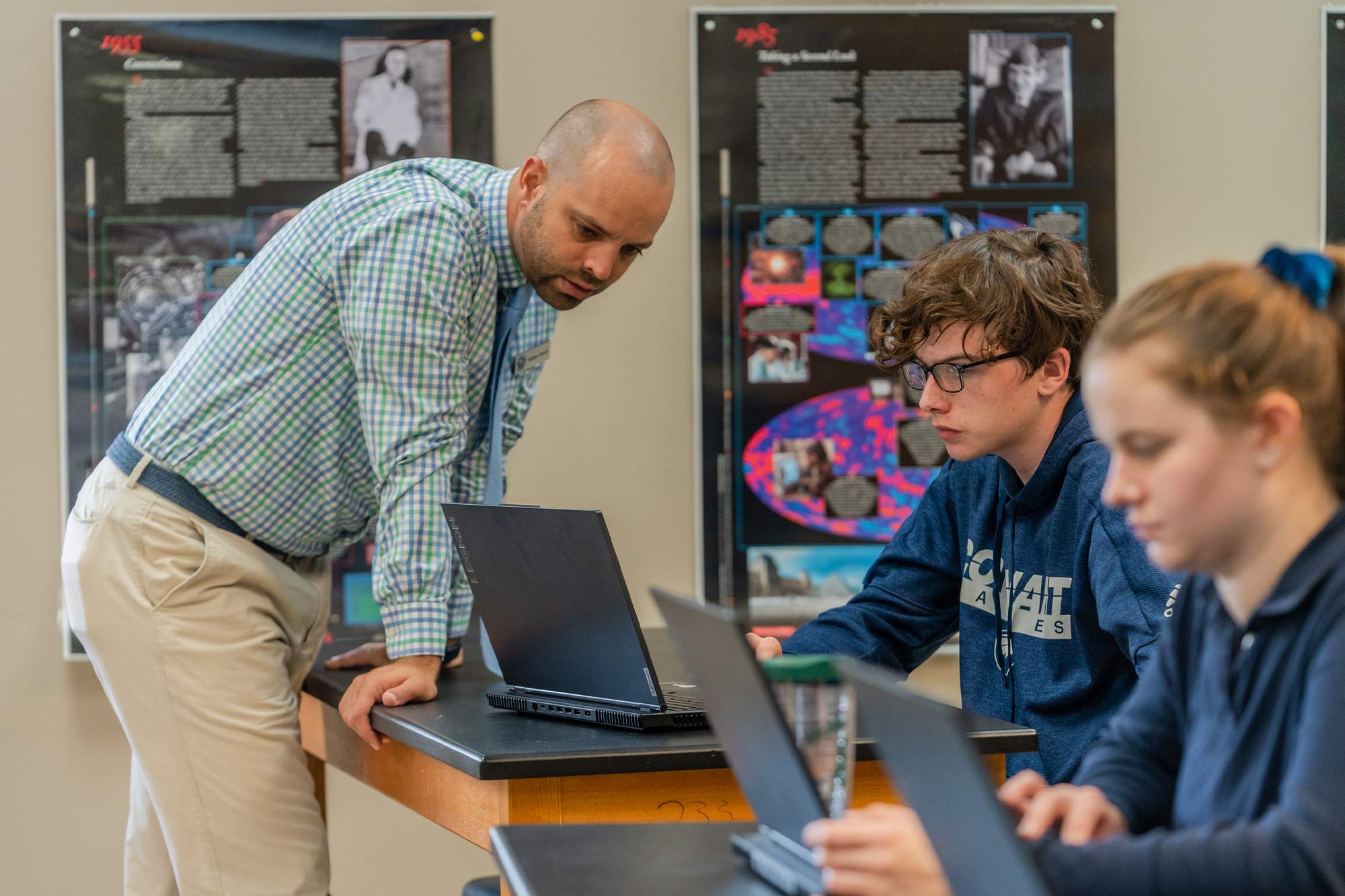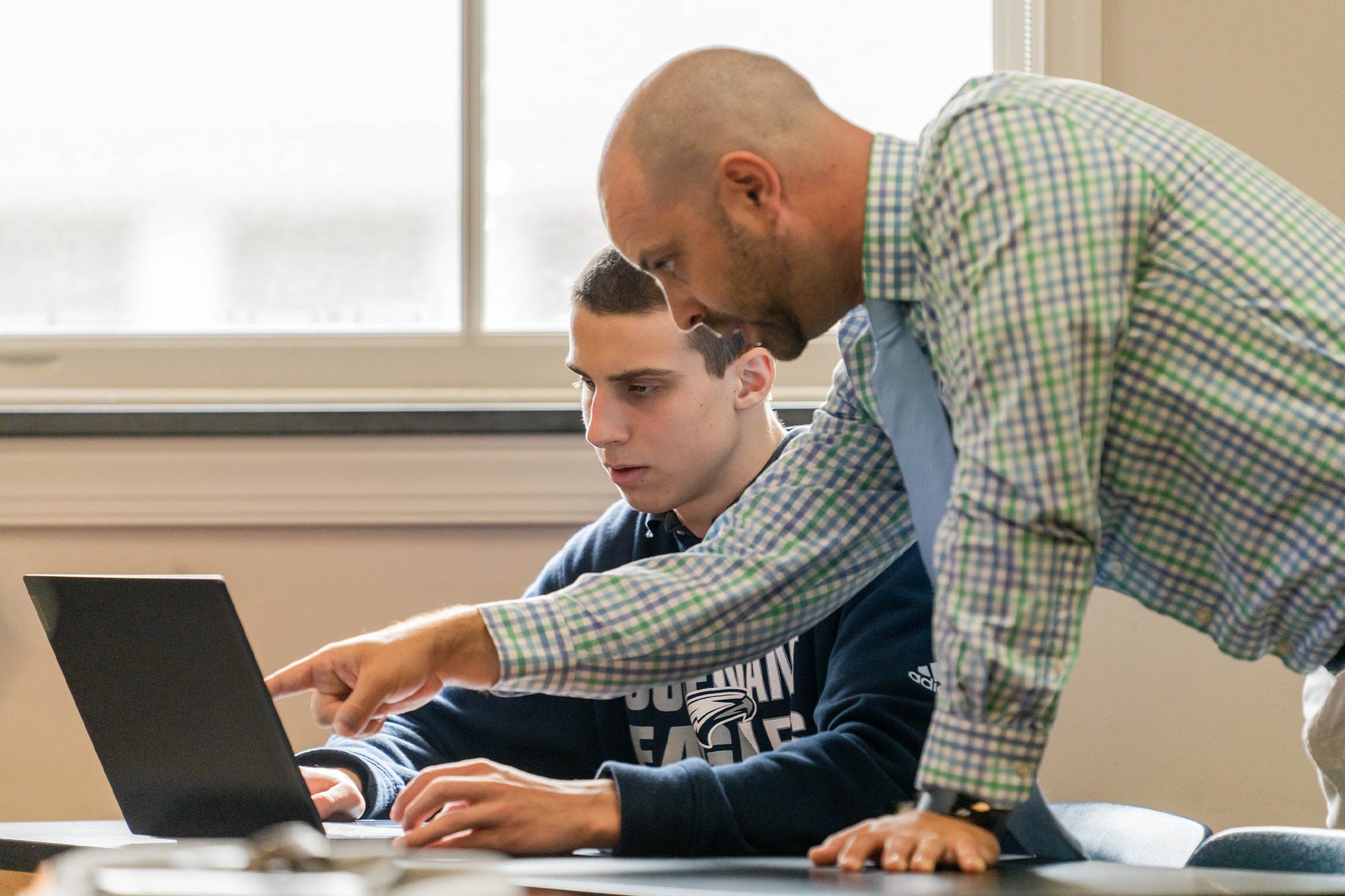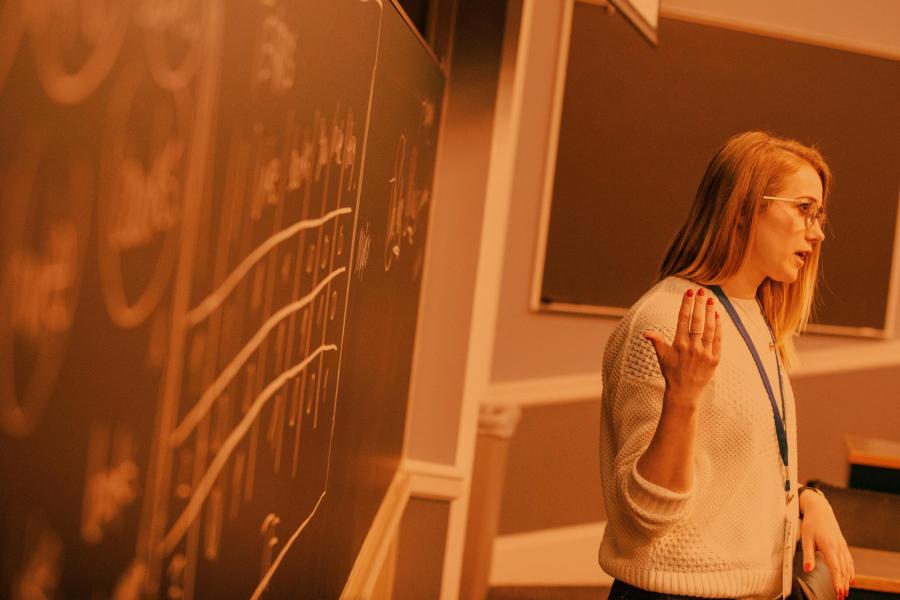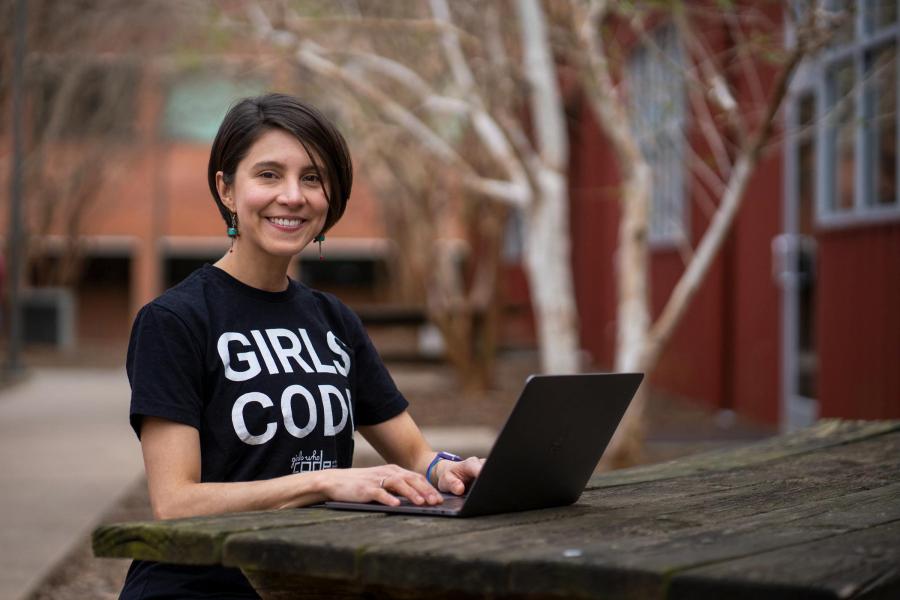Over the next three months, the students will learn the principles of statistics, basic coding and anything else they need to bootstrap their data “pipelines” into useful tools.
The projects are set to conclude in December with group presentations.
For Nathan Klintworth, a senior who applied to UVA within the past week, the course is already making a difference in terms of his ever-refining career focus.
“I’ve been pretty set for most of my life on my first choice of a career, math professor, but this class has made me realize that data science would also be a good career option,” Klintworth said. “I am very interested in the idea of using math to help solve real-world issues, and data science seems to be a field in high demand nowadays. I will definitely want to continue learning more and taking classes about it in college.”
Senior Josie Laugelli also plans to apply to UVA. She said the class has been valuable in demonstrating ways to extract meaning from raw information, even if data science probably won’t be her path.
“I love the approach that this class takes with teaching various concepts, trying them on our own and talking about how they can be applied to the analysis of data,” Laugelli said.
Though she’s more interested in engineering and architecture, “I will keep my mind open.”
Borrowing From the Past, Trying Something New
Dakolios freely admits he borrowed heavily from his UVA mentors’ courses, with permission. He specifically credits Practice and Application in Data Science, which is taught by Rafael Alvarado, an associate professor who directs the residential master’s program. But he gives overall credit to Tashman for envisioning and building the course.
Both professors provided Dakolios with structures and insights that made his teaching a quick reality.
“I went back through old notebooks and said, ‘OK, how did we build a pipeline in that course?’ And then, ‘How can we make it similar, but on a high school level?’”
Currently, the Covenant students are journaling about their learning experience, which will give Tashman some raw feedback he may use in his recommendations to the state for a more formalized data science course structure.
Everyone involved in the process is learning something new, said Dakolios, who is a former South Carolina Independent Schools Teacher of the Year. In addition to his master’s in data science, he earned a master’s in higher education/higher ed administration at UVA, in 2009.
“In many ways, I was an expert at what I was teaching before; I was teaching statistics and calculus, and had been doing it for a long time. It was very, very comfortable. I could just walk in and teach a lesson,” Dakolios said. “And so this is something new, where I know enough to teach this course, certainly, and I feel like I’m well-prepared. But I’m going from learning a new field, and then just two years later, teaching it to high school students.”
But one of the many aspects that makes data science attractive to him, he said, is that “if you don’t know something, you just look it up and it’s there.”
“Troubleshooting and doing your own research is paramount in this field,” he continued. “And so I think that that’s going to be important for me as the teacher to say, ‘Oh, I haven’t seen this error before. Let’s look it up together.’”
Dakolios said despite his ongoing ties to Covenant that include having daughters in its elementary school, he isn’t sure how much longer he’ll be able to teach the course, simply because his primary job comes first. Still, he’s enjoying the unexpected extension of his teaching career while it lasts.
“I’m an extrovert, so I get my energy from the students and being back in the classroom,” he said.
In the meantime, Tashman and others in the School of Data Science are actively seeking both private- and public-school teachers who may have an interest to preparing the next generation for careers in data science. For information, contact datascience@virginia.edu.
